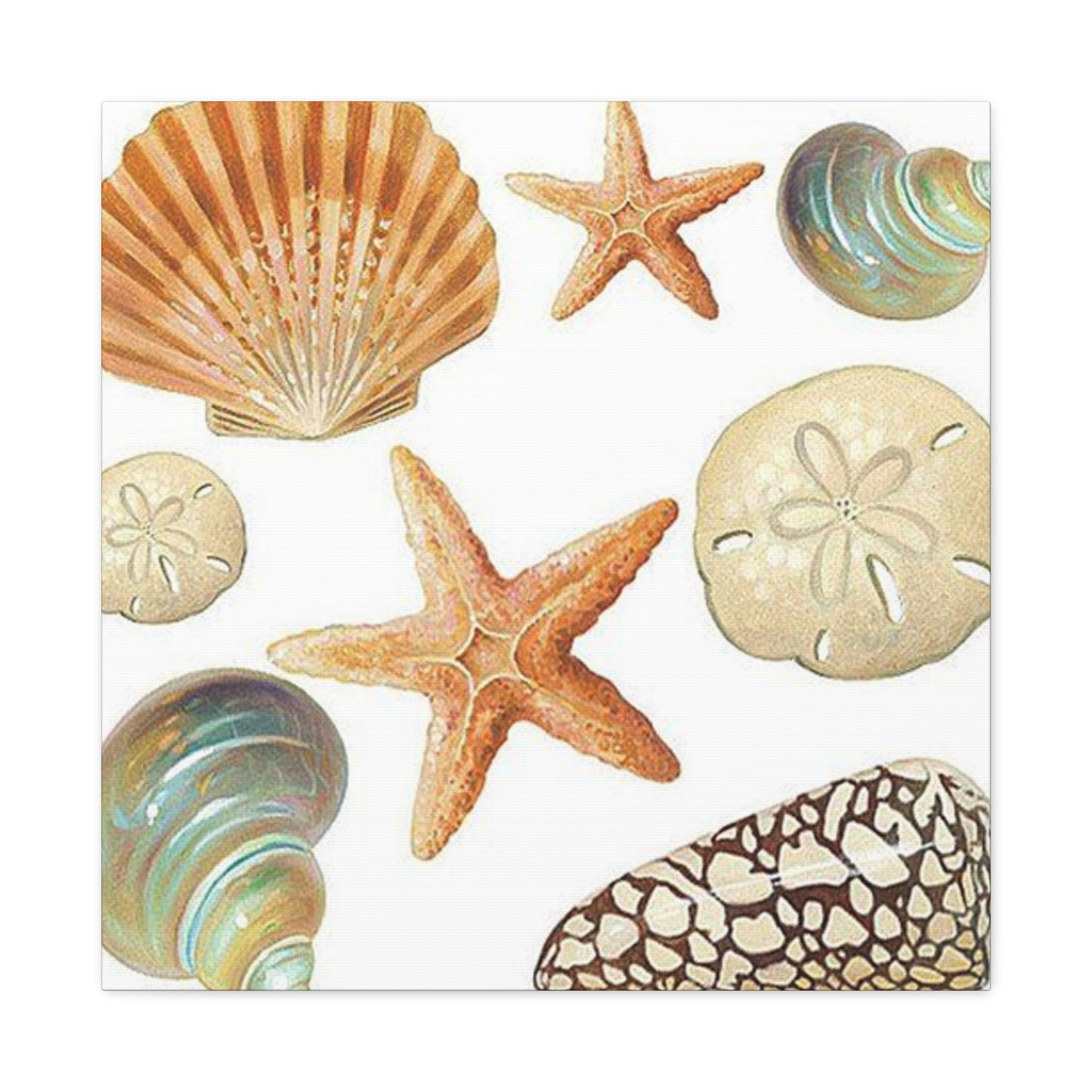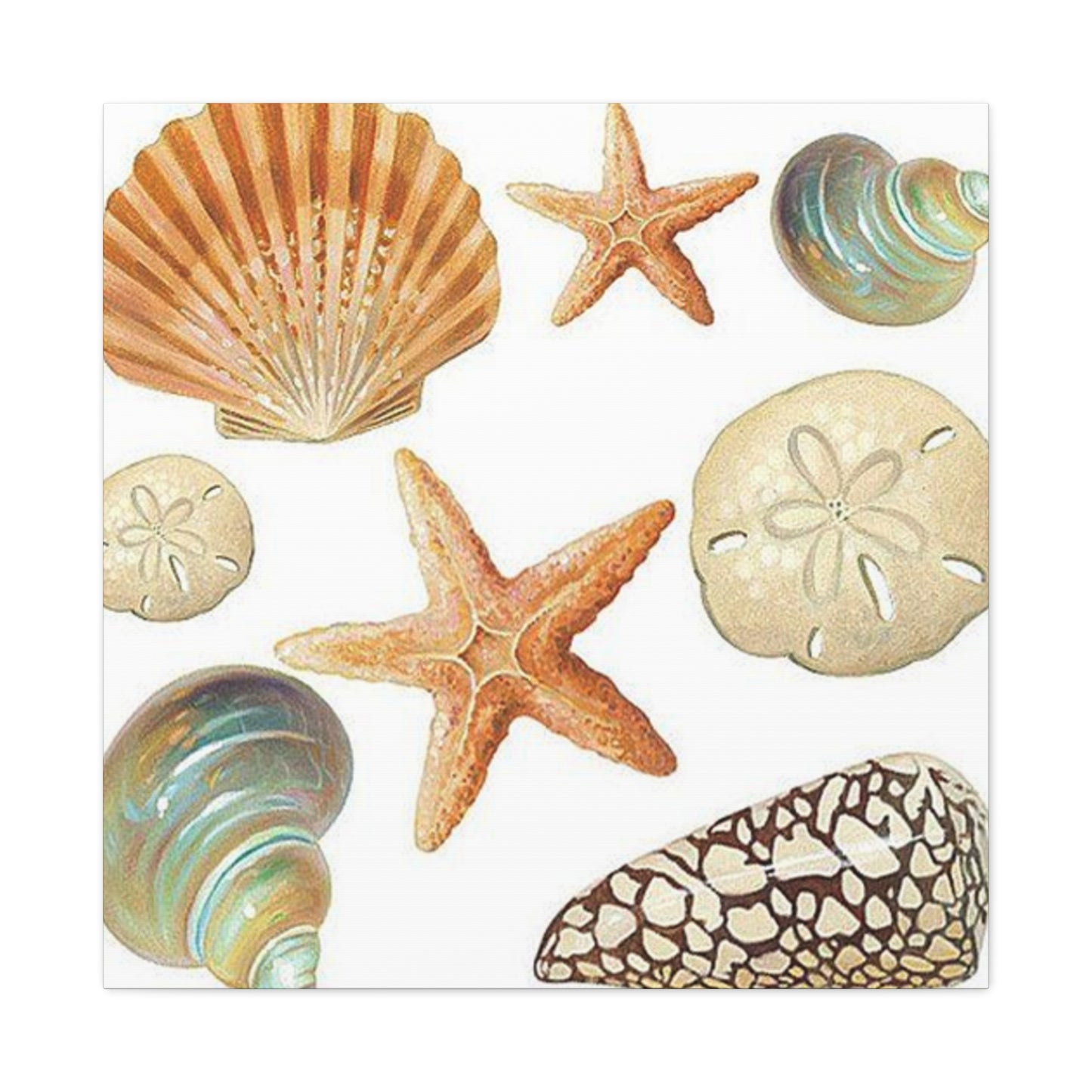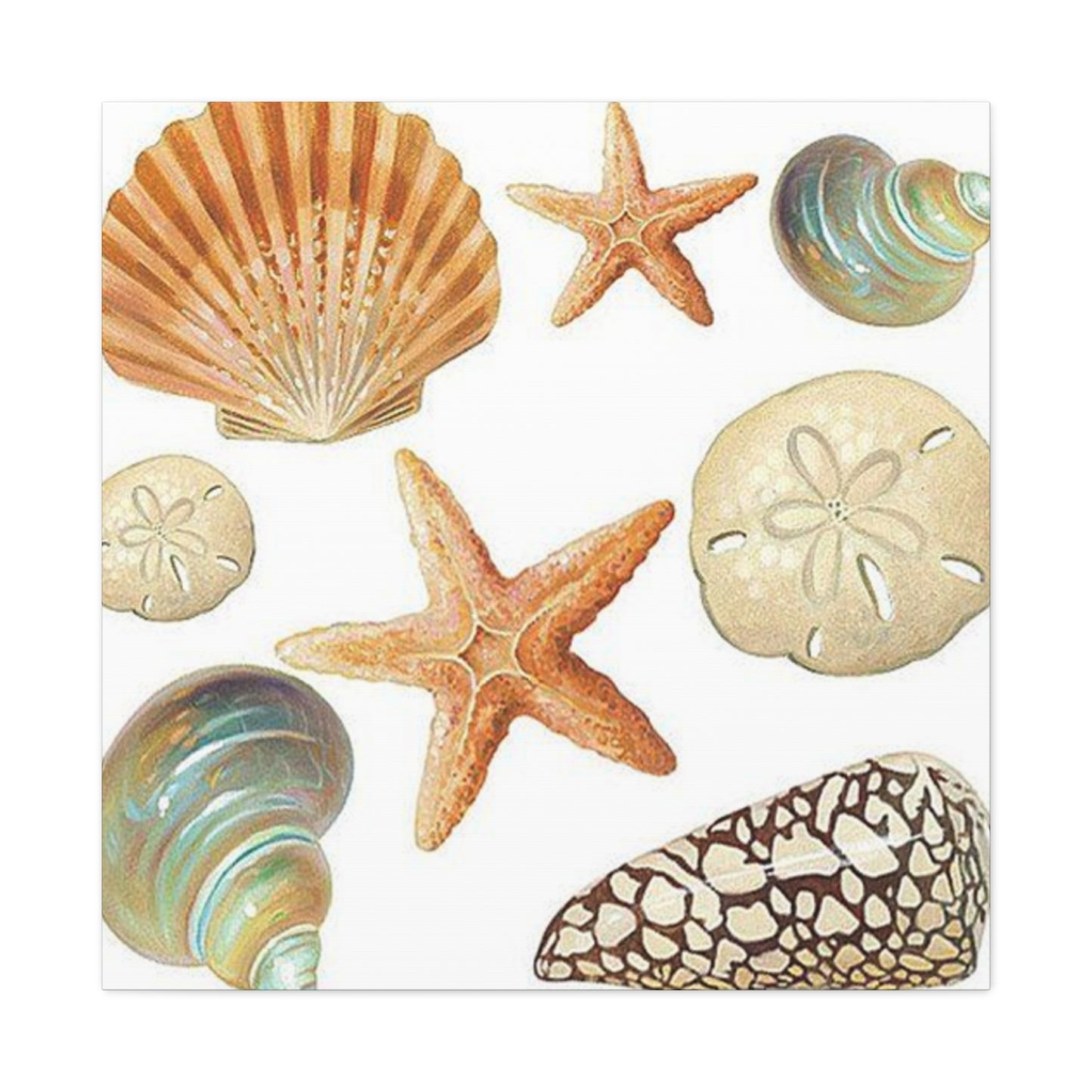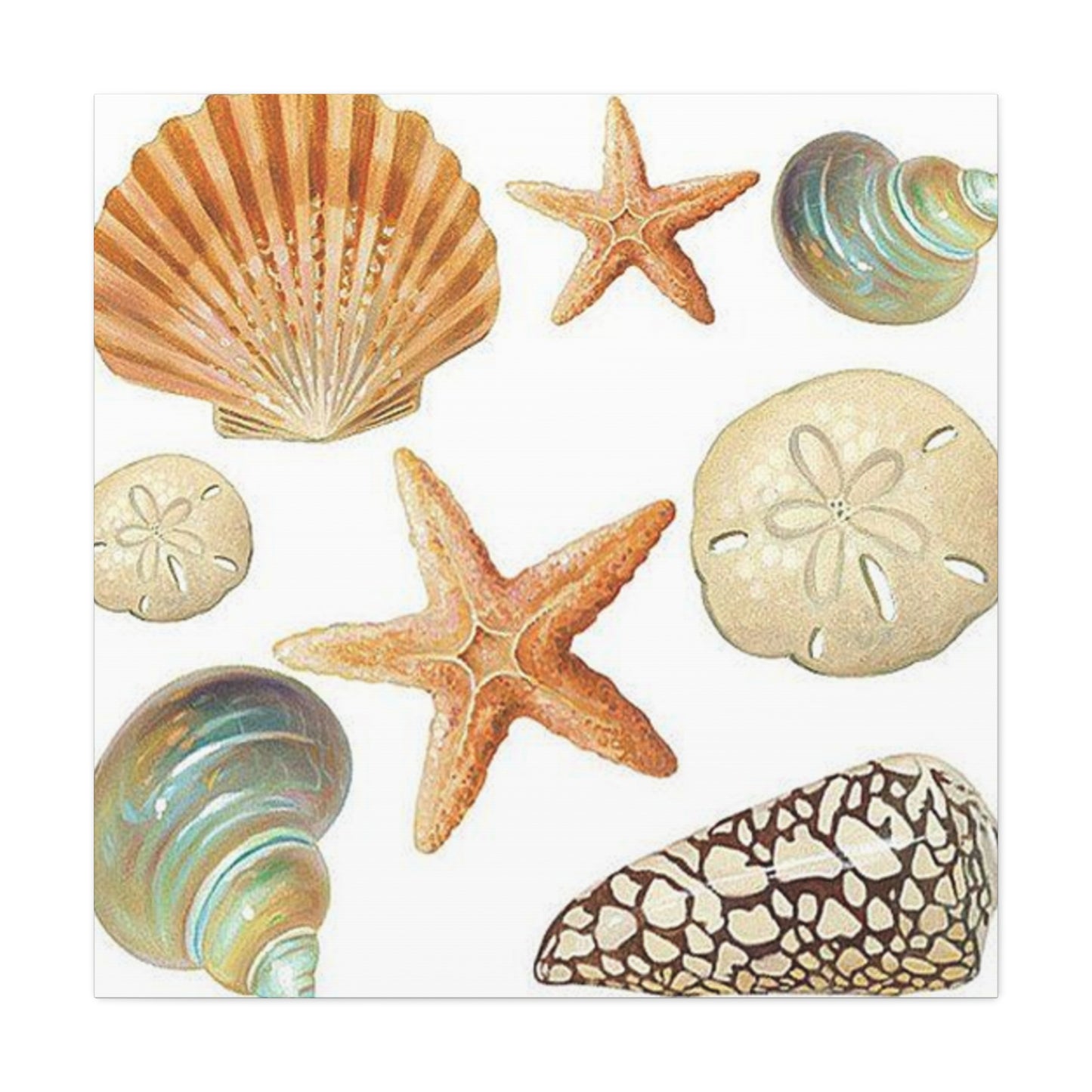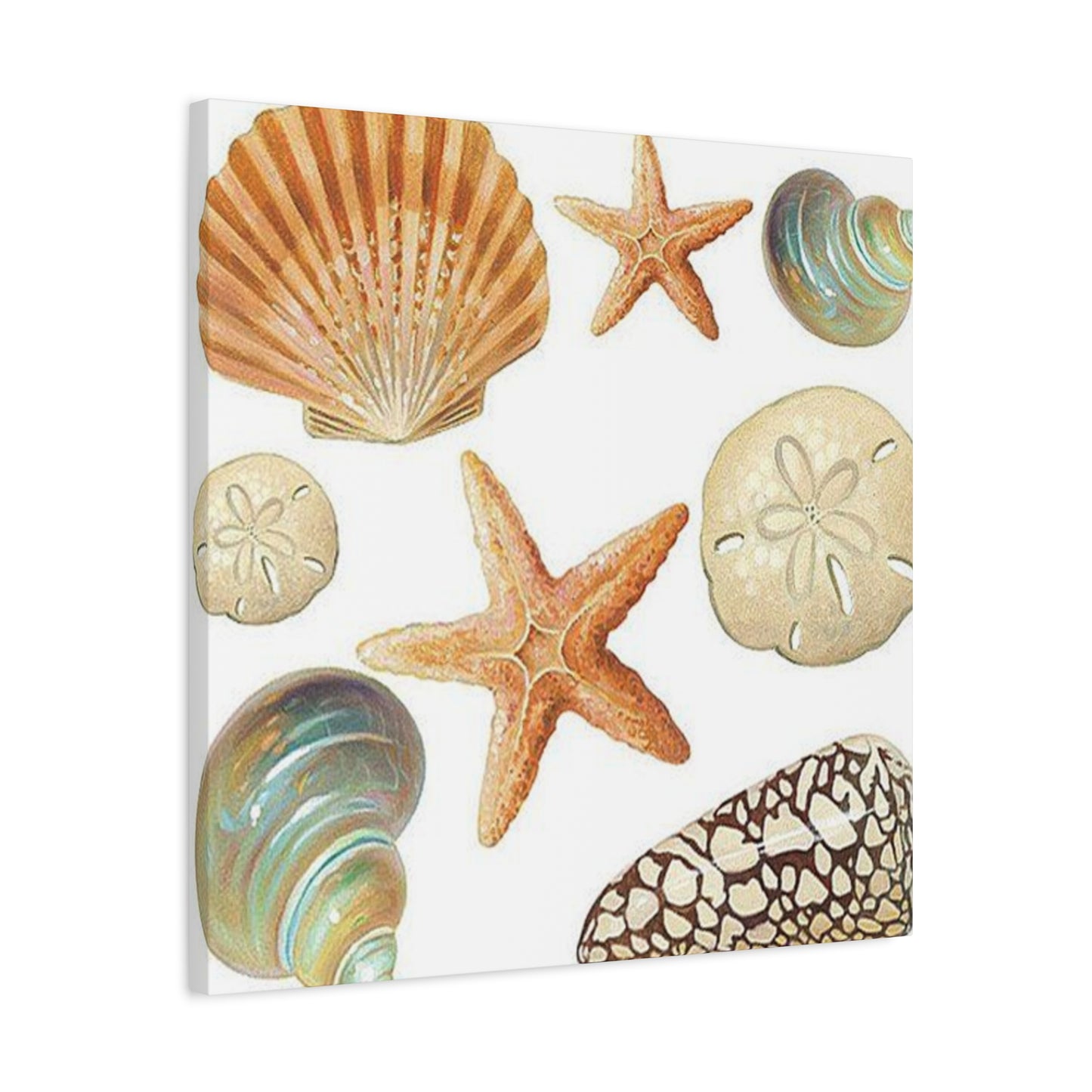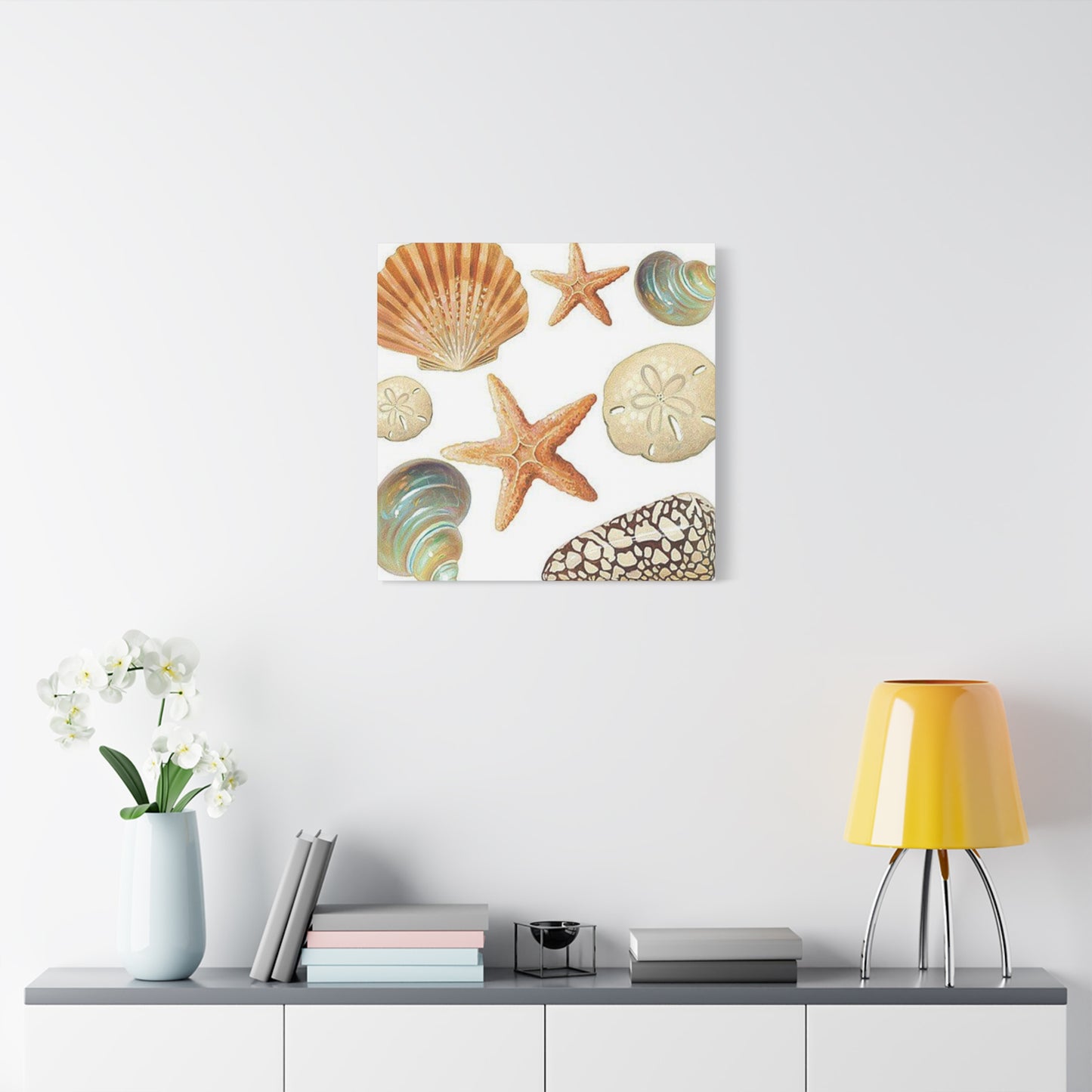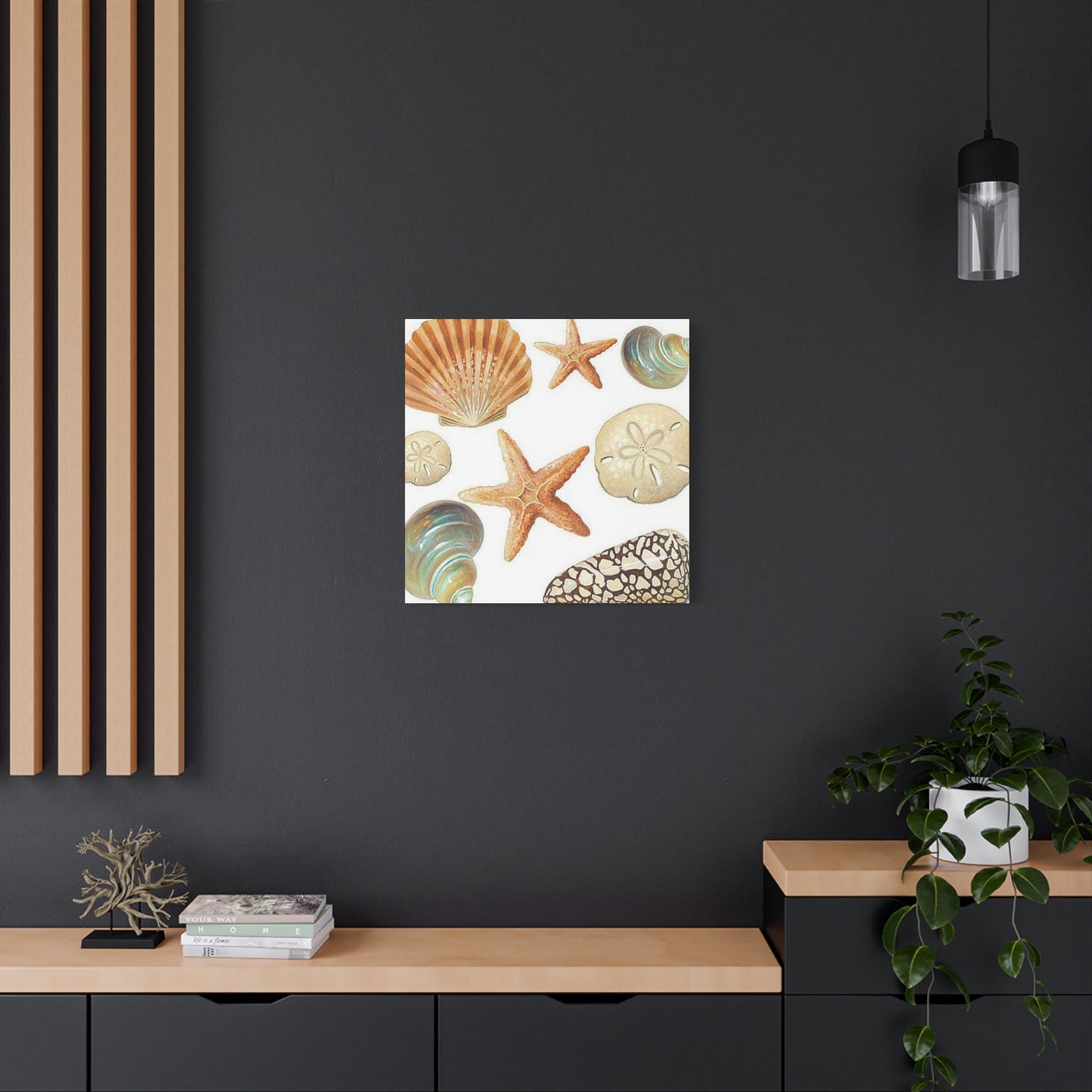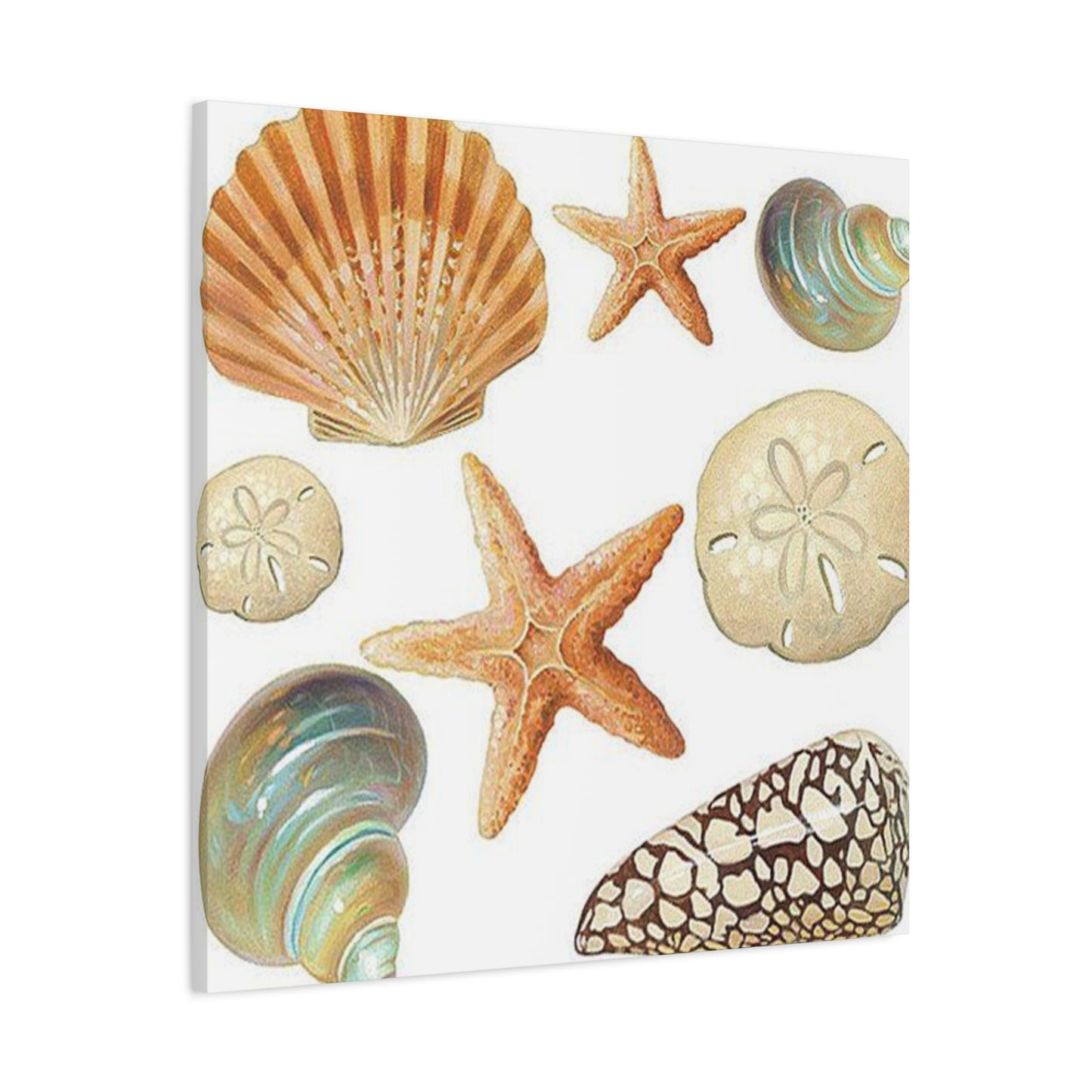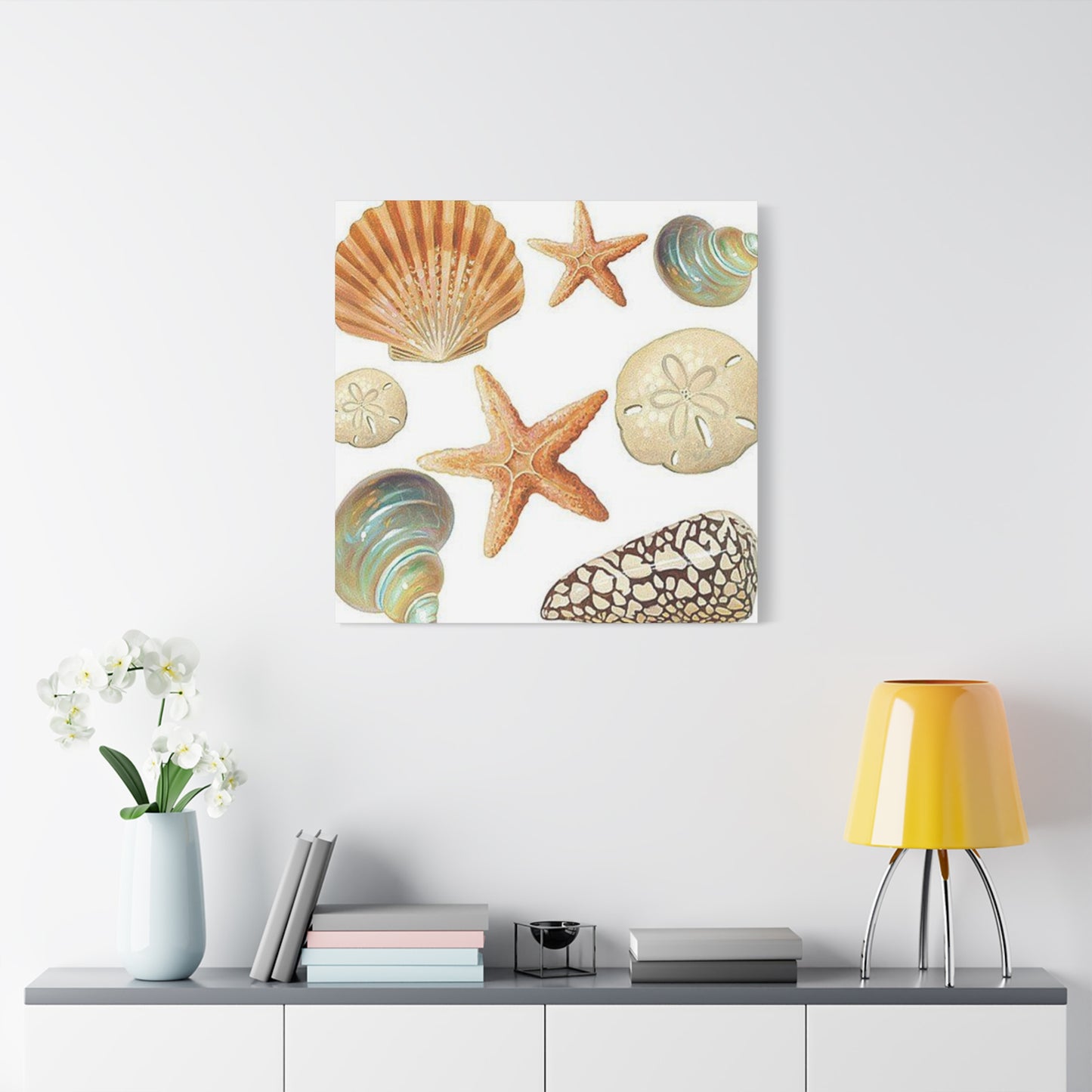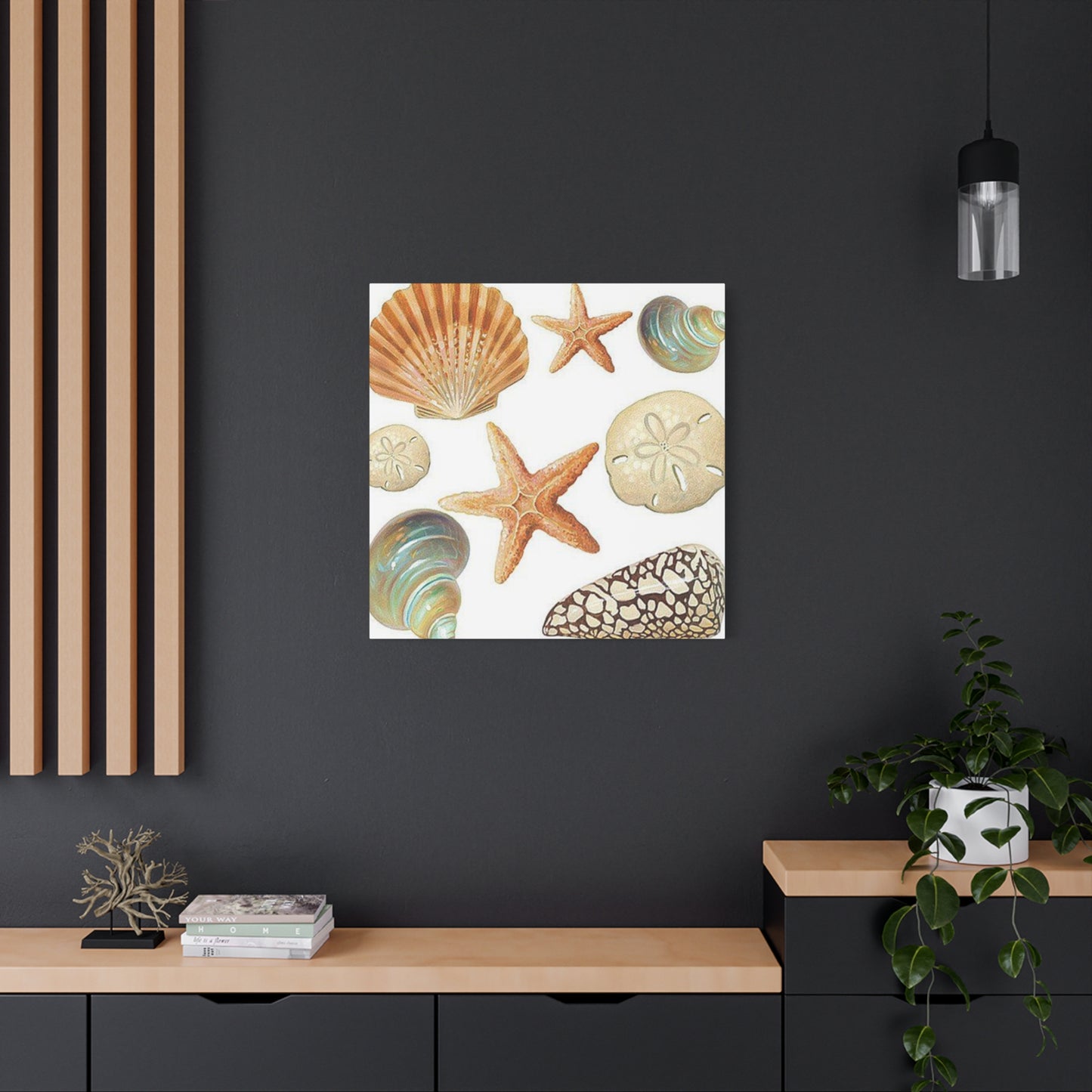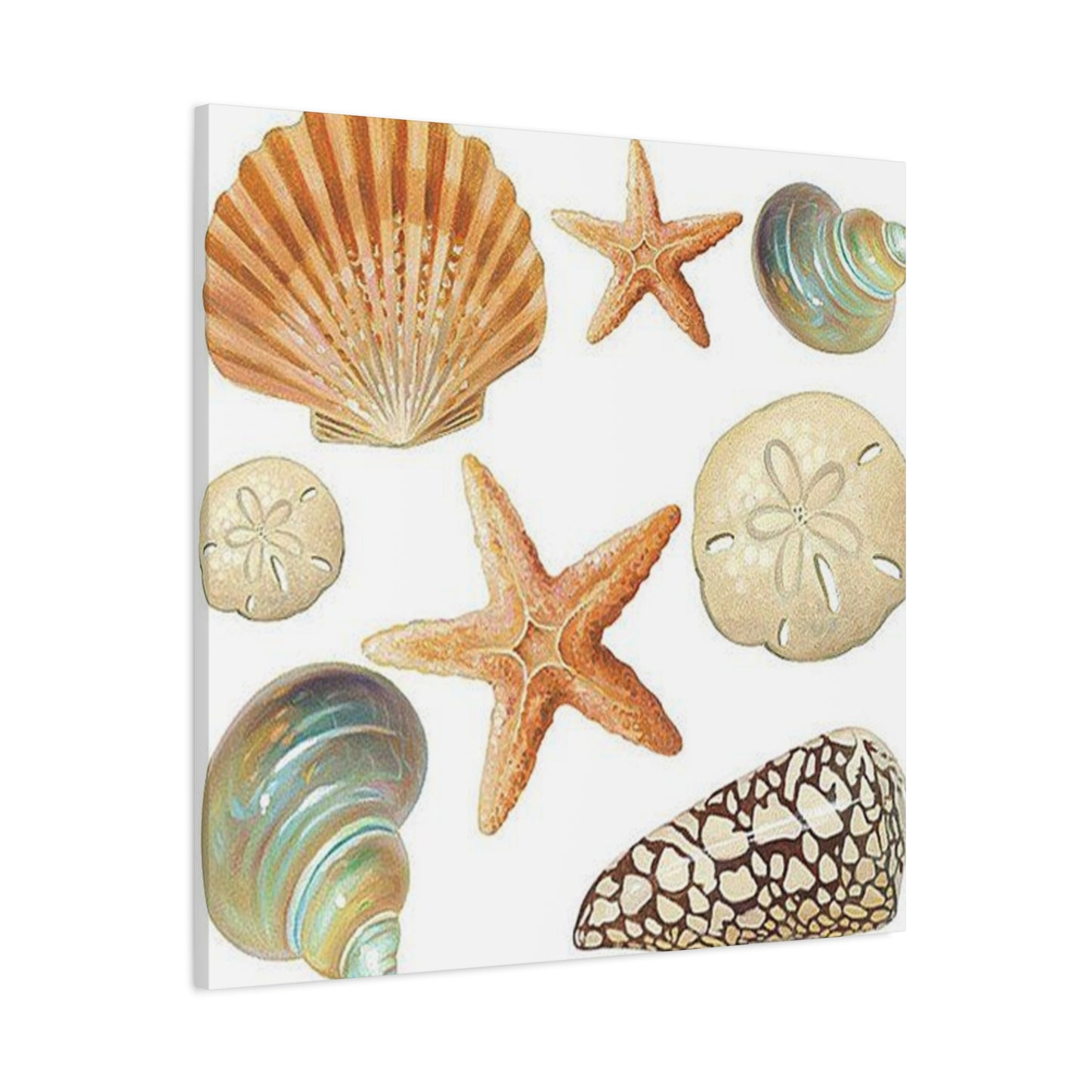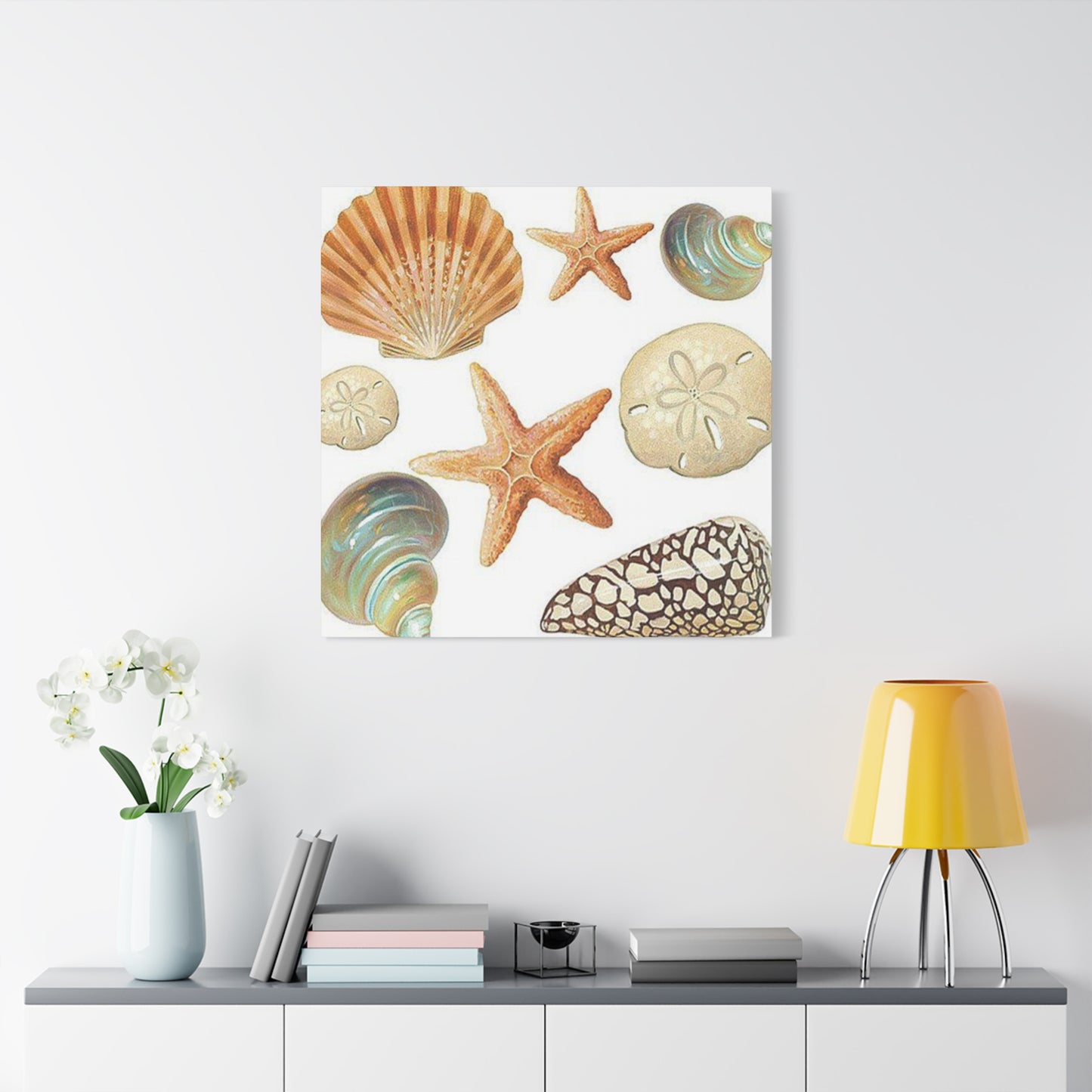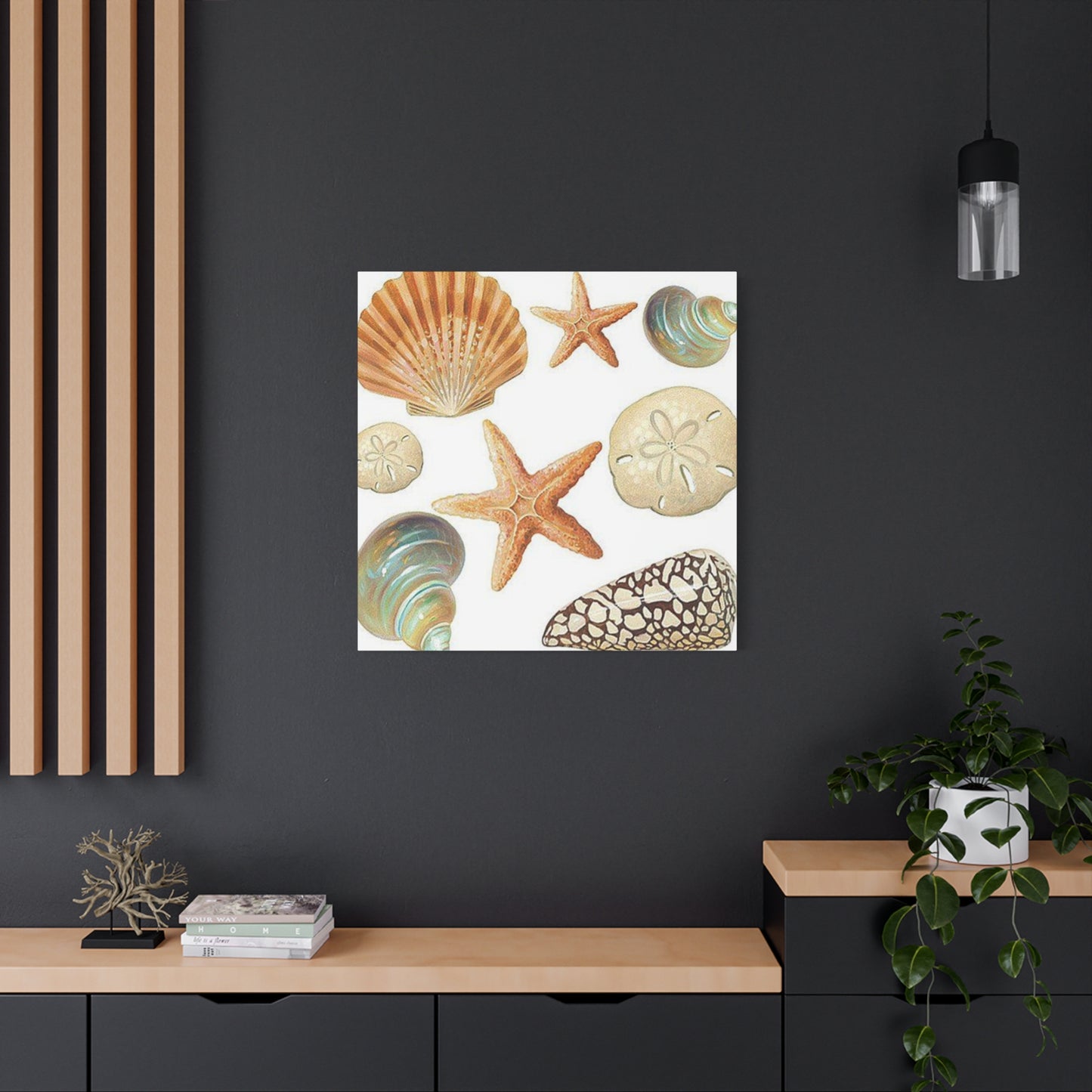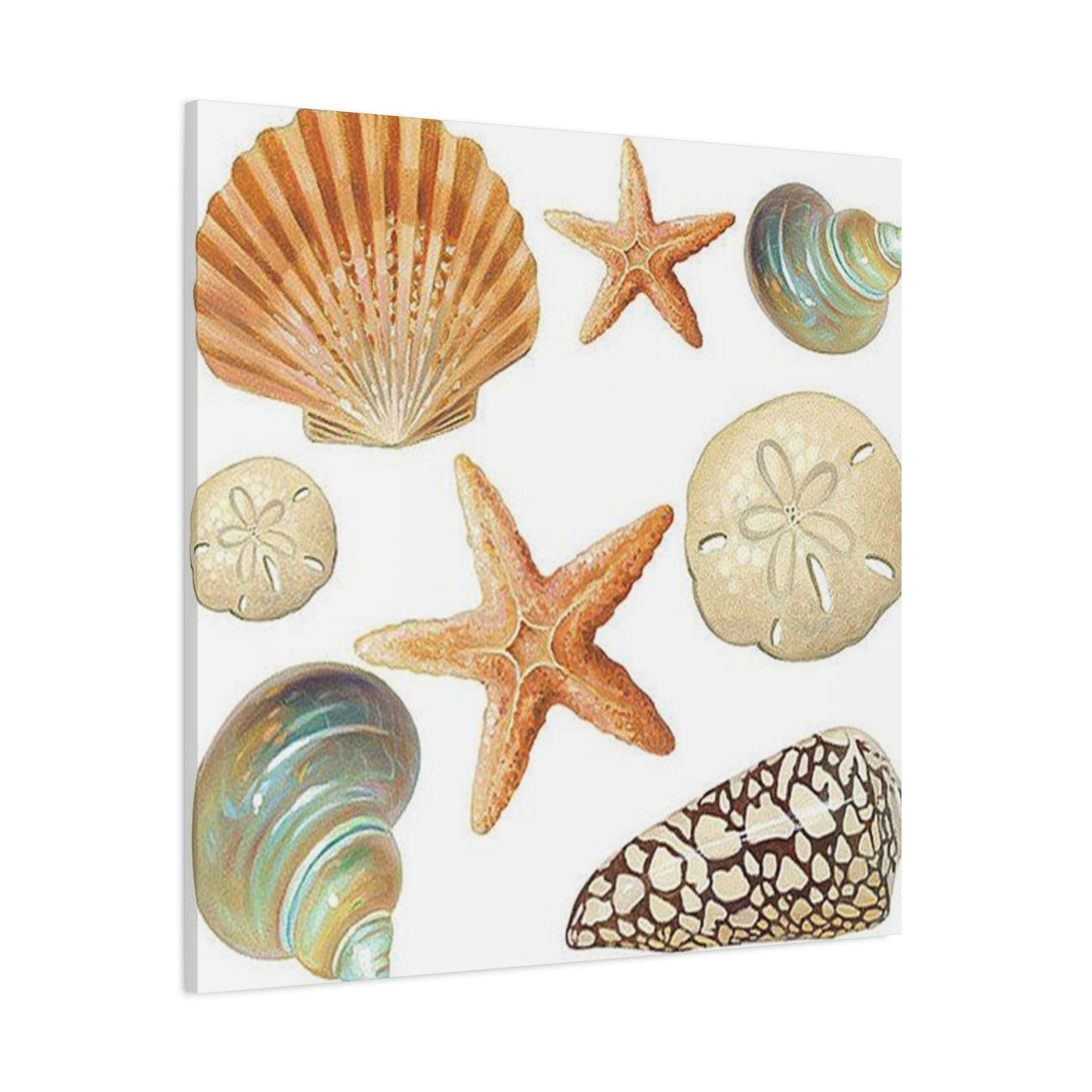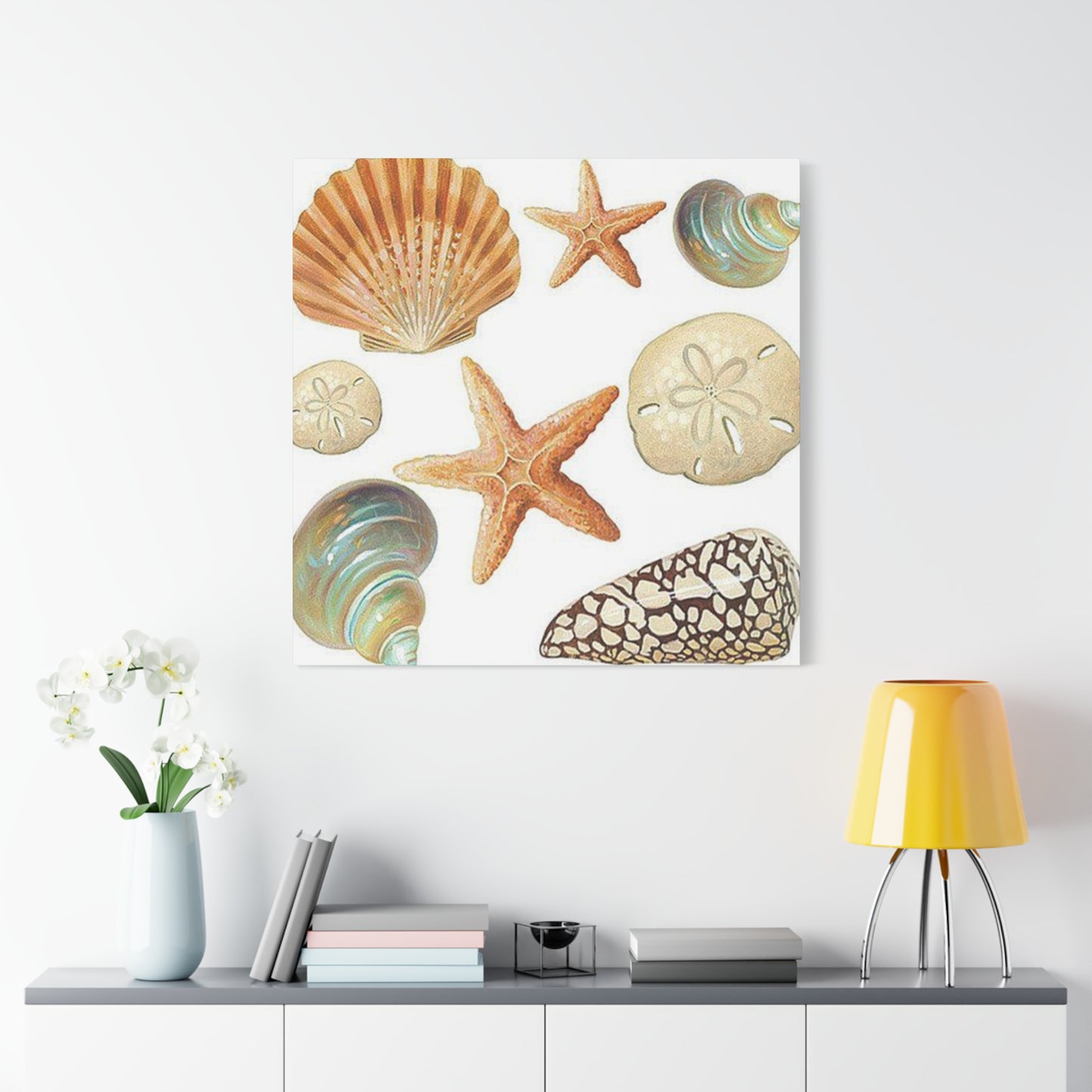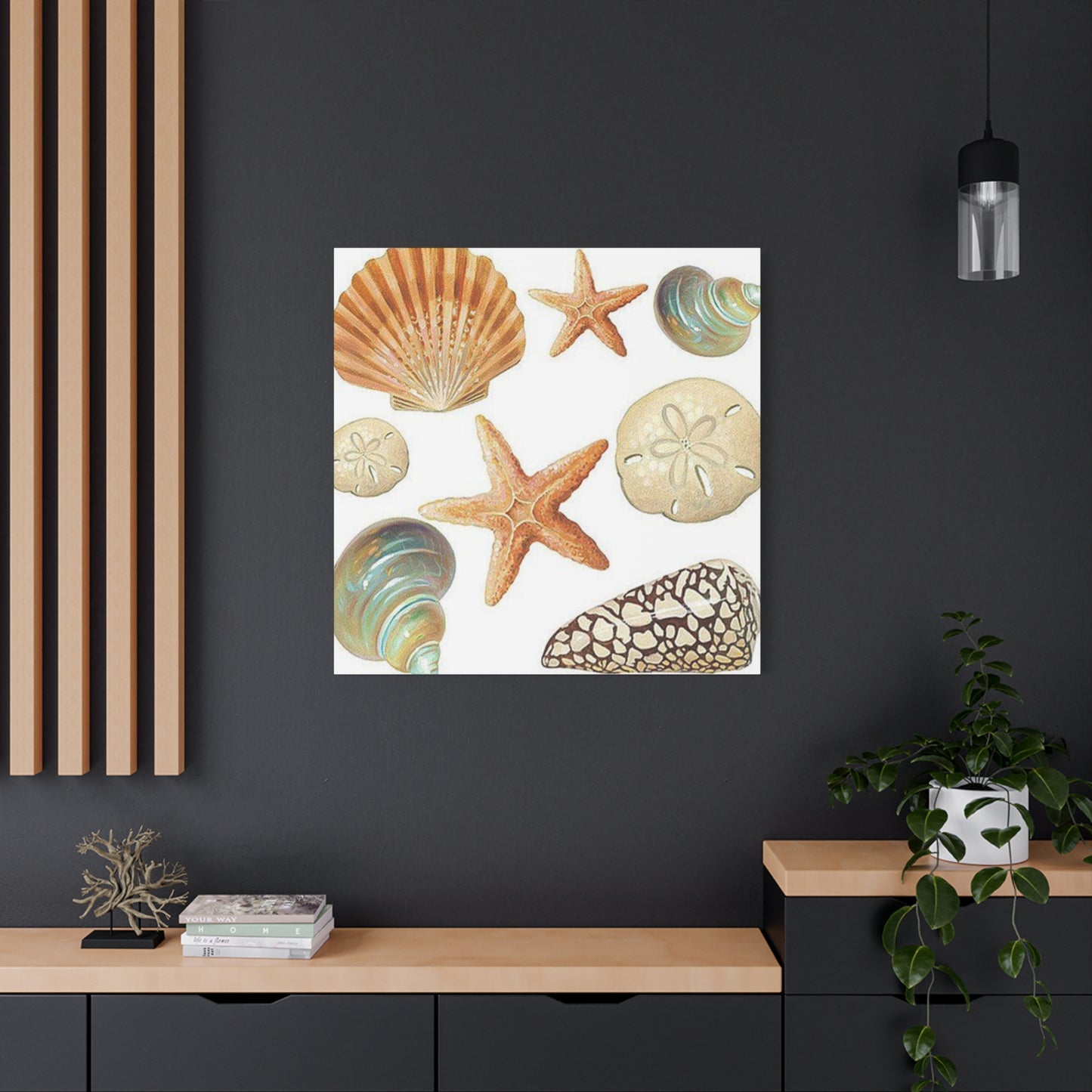Complete Guide to Star Sea Shells Wall Art and Ocean-Inspired Home Décor
Decorating your living space with marine-inspired artwork has become one of the most sought-after interior design trends in recent years. The calming influence of oceanic elements brings a sense of tranquility and natural beauty into any room. From elegant starfish designs to intricate seashell patterns, these decorative pieces transform ordinary walls into captivating focal points that evoke memories of sandy beaches and gentle waves. This comprehensive guide explores every aspect of incorporating maritime aesthetics into your home through various artistic mediums and design approaches.
Star Sea Shells Wall Art
The combination of starfish and seashells creates an enchanting visual narrative that captures the essence of coastal living. These artistic compositions feature carefully arranged marine specimens that showcase the natural diversity found along shorelines. The intricate textures and organic shapes of these ocean treasures provide endless inspiration for artists and designers who seek to bring aquatic beauty into interior spaces.
When selecting pieces that feature both starfish and shells, consider the color palette that best complements your existing décor. Natural tones ranging from sandy beige to pearl white offer versatile options that blend seamlessly with various design schemes. The sculptural quality of starfish adds dimensional interest, while shells provide delicate details that draw the eye closer for intimate viewing.
Artists often arrange these elements in dynamic compositions that suggest movement and flow, mimicking the natural patterns found in tidal pools and ocean floors. The careful placement of each component creates visual rhythm and balance, essential principles in effective wall decoration. Some compositions feature symmetrical arrangements that convey formal elegance, while others embrace asymmetry for a more organic, relaxed aesthetic.
The popularity of combining these two iconic marine elements stems from their complementary characteristics. Starfish bring geometric structure with their radiating arms, while shells offer curved, spiral forms that soften the overall composition. This interplay between angular and rounded shapes creates visual interest that keeps viewers engaged.
Material choices for these artworks vary widely, from actual preserved specimens mounted on canvas to photographic reproductions and hand-painted interpretations. Each medium offers distinct advantages in terms of durability, maintenance, and aesthetic impact. Preserved specimens provide authentic texture and three-dimensional depth, while printed versions offer consistency and easier care requirements.
Lighting plays a crucial role in displaying these pieces effectively. Natural light enhances the subtle color variations and textural details, while strategic artificial lighting can create dramatic shadows that emphasize dimensional elements. Consider the light sources in your space when positioning these artworks to maximize their visual impact throughout the day.
Size considerations matter significantly when incorporating these pieces into your design scheme. Large-scale installations make bold statements in spacious rooms, while smaller pieces work well in intimate spaces or as part of gallery wall arrangements. The scale should relate proportionally to the wall space and surrounding furniture to achieve proper visual balance.
Coastal Shell Canvas Prints
Canvas prints featuring seashell imagery offer an accessible and affordable way to introduce oceanic elements into your interior design. Modern printing technology captures extraordinary detail, reproducing the intricate patterns, subtle color gradations, and delicate textures that make shells fascinating natural sculptures. These reproductions provide gallery-quality aesthetics without the fragility concerns associated with actual specimens.
The canvas medium itself contributes significantly to the overall aesthetic appeal. The textile surface provides a slight texture that adds depth and dimension to images, creating a more engaging viewing experience than flat photographic prints. This subtle texture interacts beautifully with light, producing gentle variations in how the image appears throughout the day as natural illumination changes.
Contemporary printing techniques employ archival-quality inks that resist fading, ensuring your investment maintains its visual impact for decades. Many manufacturers offer warranties guaranteeing color stability for twenty-five years or more under normal indoor conditions. This longevity makes canvas prints practical choices for both residential and commercial applications.
The variety of shell species represented in available prints provides extensive selection options. From common varieties like scallops and conches to exotic specimens from tropical waters, you can choose imagery that reflects personal preferences or complements specific color schemes. Some prints feature single specimens in stunning detail, while others showcase diverse collections that celebrate the remarkable diversity of marine mollusks.
Composition styles range from scientific illustration approaches that emphasize accurate representation to artistic interpretations that prioritize mood and atmosphere. Documentary-style images appeal to collectors and nature enthusiasts who appreciate precise detail, while impressionistic treatments suit those seeking softer, more decorative aesthetics.
Background choices significantly influence the overall feel of these prints. Clean white backgrounds create fresh, contemporary looks that work well in modern and minimalist interiors. Neutral sandy tones suggest beachside environments and complement coastal design themes. Blue backgrounds evoke underwater settings and intensify the oceanic connection. Dark backgrounds create dramatic contrast that makes light-colored shells appear luminous and sculptural.
Gallery wrap mounting, where the image extends around the frame edges, eliminates the need for additional framing and creates a polished, finished appearance. This streamlined presentation style suits contemporary interiors and allows the artwork itself to command attention without decorative frame competition. Alternative mounting options include traditional framing, which can add formal elegance or vintage charm depending on frame style selection.
Ocean Breeze Wall Decor
Creating the sensation of fresh coastal air and gentle sea breezes through visual elements requires thoughtful selection and arrangement of decorative pieces. This design approach emphasizes lightness, movement, and airy qualities that evoke the refreshing atmosphere found along shorelines. The goal extends beyond merely displaying ocean-related imagery to actually capturing the ephemeral feeling of being near the sea.
Color palettes dominated by soft blues, seafoam greens, and sandy neutrals establish the foundational atmosphere. These gentle hues suggest sky, water, and sand without overwhelming spaces with intense saturation. White and cream tones add brightness and amplify the sense of airiness, while occasional deeper blue accents provide depth and prevent the scheme from appearing washed out.
Textile elements play important supporting roles in achieving this aesthetic. Sheer curtains that flutter with actual breezes reinforce the theme functionally while adding graceful movement. Natural fiber rugs in jute or sisal introduce organic texture that references sandy beaches. Linen upholstery and cotton throws contribute to the relaxed, casual atmosphere associated with coastal living.
Artwork selections should emphasize horizontal compositions that mirror the endless horizon where ocean meets sky. These panoramic formats naturally suggest expansiveness and open spaces. Abstract pieces that capture the essence of wind and waves through gestural brushstrokes and flowing forms work particularly well for this design direction.
Natural materials enhance authenticity and strengthen the connection to coastal environments. Weathered wood frames suggest driftwood washed ashore by tides. Rope details reference nautical heritage. Glass elements evoke water's transparency and reflective qualities. Incorporating these materials creates multi-sensory experiences that engage touch as well as sight.
Negative space becomes a crucial design element when pursuing this aesthetic. Avoiding clutter and allowing generous space around each piece reinforces feelings of openness and freedom. This restraint proves challenging for many decorators accustomed to filling every available surface, but it remains essential for achieving authentic breezy atmosphere.
Layering techniques add subtle complexity without sacrificing airiness. A large statement piece might serve as the foundation, with smaller complementary elements arranged around it at varying distances. This creates depth and interest while maintaining overall lightness. The key lies in selecting pieces with compatible visual weights and ensuring adequate spacing.
Beach Vibe Canvas Art
Capturing the distinctive character and relaxed atmosphere of beach culture through canvas artwork involves more than simply depicting coastal scenes. It requires understanding the lifestyle, attitudes, and aesthetic sensibilities associated with seaside communities. This genre celebrates casual elegance, natural beauty, and the slower pace of life found in places where land meets water.
Authentic beach vibe artwork often incorporates elements that suggest human interaction with coastal environments. Weathered boardwalks, vintage surfboards, beach chairs, and umbrellas add narrative interest and help viewers imagine themselves within the scene. These details distinguish lifestyle-oriented pieces from pure nature photography or scientific illustration.
Typography-based designs featuring inspirational quotes or playful coastal phrases have gained tremendous popularity within this category. Phrases celebrating relaxation, happiness, and natural beauty resonate with people seeking to create retreat-like atmospheres in their homes. The combination of words and imagery creates powerful emotional connections that purely visual pieces may not achieve.
Vintage and distressed aesthetics align naturally with beach vibe sensibilities. Artwork featuring faded colors, worn textures, and weathered appearances suggests the passage of time and the effects of sun, salt, and wind. These characteristics evoke nostalgia and convey authentic coastal character better than pristine, polished presentations.
Color treatments tend toward either bright, saturated palettes that celebrate sunny optimism or sun-bleached pastels that suggest long days under intense sunlight. Both approaches work effectively depending on the specific mood you wish to create. Vibrant colors energize spaces and create cheerful, welcoming atmospheres, while softer tones promote relaxation and tranquility.
Abstract interpretations of beach themes offer sophisticated alternatives to literal representations. Impressionistic suggestions of sand, surf, and sky through color field techniques or gestural brushwork appeal to those preferring subtle sophistication over obvious imagery. These pieces work particularly well in contemporary interiors where overly literal beach scenes might appear incongruous.
Nautical Shell Wall Art
The nautical design tradition brings structured elegance and maritime heritage to shell-themed artwork. This approach differs from purely decorative coastal pieces by incorporating specific design elements associated with sailing, navigation, and seafaring history. The resulting aesthetic balances refined sophistication with adventure and exploration themes.
Classic nautical color schemes provide the foundation for this design direction. Navy blue serves as the primary color, evoking deep ocean waters and naval uniforms. Crisp white adds contrast and suggests sailcloth and breaking waves. Red accents reference port side markers and safety equipment. Gold touches hint at brass fittings and sunset light on water. This distinctive palette immediately signals nautical design intent.
Shells within nautical contexts are often presented with greater formality and order than in casual beach-themed designs. Symmetrical arrangements, uniform spacing, and geometric organization reflect maritime precision and discipline. Scientific illustration styles that carefully document species details align well with nautical aesthetics and appeal to collectors and enthusiasts.
Supporting graphic elements strengthen the nautical narrative. Compass roses, anchor symbols, rope borders, and ship wheels can frame or accompany shell imagery. These iconic maritime symbols create layered meanings and reinforce thematic consistency. However, restraint prevents these pieces from becoming overly literal or thematically heavy-handed.
Typography in nautical shell art often employs traditional serif fonts that reference vintage maps, ship logs, and historical documents. Latin species names add scholarly sophistication, while poetic quotations about the sea contribute romantic elements. Text integration should enhance rather than dominate the overall composition.
Material and finish choices support the nautical aesthetic. Weathered wood frames suggest ship decking and dock planks. Rope matting references maritime rigging. Brass corner brackets evoke ship hardware. Antiqued mirror accents suggest brass instruments and porthole glass. These details transform simple shell prints into cohesive design statements.
Sea Life Wall Decor
Expanding beyond shells and starfish to encompass the broader diversity of marine organisms creates opportunities for more comprehensive oceanic storytelling. This inclusive approach celebrates the remarkable variety of life forms inhabiting Earth's waters, from microscopic plankton to massive whales. The resulting decorative schemes can educate while beautifying spaces.
Scientific accuracy matters more in this category than in purely decorative coastal art. Many pieces serve dual purposes as both wall decoration and educational tools. Accurate species representation, proper anatomical detail, and sometimes Latin nomenclature appeal to nature enthusiasts, educators, and families wanting to inspire children's interest in marine biology.
Color diversity increases dramatically when representing the full spectrum of sea life. While shells trend toward neutral tones, marine organisms display extraordinary color ranges. Tropical fish species showcase vivid oranges, electric blues, and brilliant yellows. Coral polyps create living rainbows. Sea anemones pulse with fluorescent hues. This natural palette offers exciting possibilities for vibrant interior design.
Different oceanic zones and habitats provide organizational frameworks for curating sea life collections. Coral reef ecosystems teem with colorful, diverse species ideal for creating lively, energetic displays. Deep sea environments feature strange, otherworldly creatures perfect for creating mysterious, dramatic moods. Kelp forest inhabitants offer cool, calming palettes dominated by greens and browns.
Size variations among marine species create natural opportunities for dynamic compositions. Large creatures like sea turtles, dolphins, or manta rays command attention as focal points, while smaller organisms like seahorses, jellyfish, and nudibranchs provide supporting interest and detail. This natural hierarchy simplifies composition decisions and creates balanced arrangements.
Movement suggestions bring these pieces to life in ways that static shells cannot achieve. Swimming fish, floating jellyfish, and undulating octopi introduce directional flow and energy into compositions. Artists capture these dynamic qualities through various techniques including motion blur, sequential positions, and gestural rendering styles.
Starfish and Shell Canvas
Pairing these two iconic marine elements creates balanced compositions that have become emblematic of coastal design. The contrast between the geometric symmetry of starfish and the organic spirals of shells provides visual tension that keeps compositions interesting. This classic combination has proven timelessly popular across various design styles and continues evolving with contemporary interpretations.
Compositional arrangements vary widely depending on artistic intent and stylistic preferences. Formal, centered placements create stability and calm, appropriate for traditional interiors and spaces requiring tranquil atmospheres. Scattered, random arrangements suggest natural beach finds and suit casual, relaxed environments. Diagonal orientations introduce dynamic energy suitable for contemporary spaces.
Background treatments significantly influence the overall character of these pieces. Neutral backgrounds allow specimens to command full attention, highlighting intricate details and natural beauty. Contextual backgrounds showing sand, water, or weathered wood place specimens within environmental narratives. Abstract backgrounds create modern, artistic interpretations that transcend literal representation.
Photographic approaches range from clean, high-key images with pure white backgrounds to moody, low-key compositions with dramatic shadows. Overhead shots emphasize pattern and symmetry, while side lighting reveals texture and dimensional depth. Macro photography captures extraordinary detail invisible to casual observation, transforming familiar objects into abstract landscapes.
Artistic rendering styles offer alternatives to photographic realism. Watercolor treatments create soft, romantic interpretations with fluid color transitions. Oil painting techniques allow rich color saturation and visible brushwork that adds painterly interest. Digital illustration enables precise control and experimental effects impossible with traditional media.
Color palettes extend beyond natural tones to include creative recolorations and stylizations. Monochromatic treatments in blues, greens, or even unexpected hues like pink or purple create cohesive color statements. Gradient backgrounds transition from one hue to another, adding depth and contemporary flair. Metallic accents in gold or silver introduce glamorous luxury notes.
Marine-Themed Wall Art
The comprehensive category of marine-themed artwork encompasses enormous variety, from specific oceanic subjects to broad interpretations of aquatic environments. This inclusive approach allows for highly personalized design directions while maintaining cohesive oceanic connections. The flexibility accommodates diverse tastes, from those preferring literal representations to those seeking abstract interpretations.
Underwater perspectives offer distinctly different viewing experiences than surface or aerial views. Submerged viewpoints immerse viewers in aquatic environments, creating intimate connections with marine subjects. Light filtering through water creates distinctive color shifts and atmospheric effects that add mystery and depth. These immersive compositions transport viewers beneath waves into another world.
Surface treatments exploring the interface between water and air capture dynamic energy and constant change. Wave patterns, foam structures, and light reflections create abstract compositions from natural phenomena. These pieces work particularly well in contemporary interiors where literal subject matter might seem too traditional or obvious.
Aerial perspectives reveal patterns and relationships invisible from ground level. Overhead views of coastlines, coral reefs, and ocean currents create graphic, almost abstract compositions. The colors, textures, and shapes visible from above offer fresh interpretations of familiar environments. These perspectives particularly suit modern design aesthetics valuing minimalism and graphic impact.
Historical maritime subjects connect contemporary spaces with seafaring heritage. Vintage ship illustrations, antique map reproductions, and historical port scenes add nostalgic character and cultural depth. These pieces particularly suit traditional interiors, libraries, and spaces where intellectual sophistication matters.
Weather and atmospheric conditions provide dramatic subjects within marine themes. Storm clouds gathering over turbulent seas create moody, powerful compositions. Fog rolling across calm waters suggests mystery and contemplation. Brilliant sunsets paint skies with spectacular color. These meteorological elements add emotional range beyond simple subject documentation.
Ocean-Inspired Canvas Prints
Drawing inspiration from oceanic elements while allowing for creative interpretation produces artwork that evokes marine environments without literally depicting specific subjects. This approach appeals to those wanting coastal connections without obvious beach house aesthetics. The resulting pieces work across various interior styles, from traditional to contemporary, because they reference rather than explicitly represent their inspiration sources.
Abstract expressionism finds natural subject matter in ocean characteristics. The fluid nature of water, the constant motion of waves, and the ever-changing interplay of light and color provide endless inspiration for non-representational work. Gestural brushstrokes suggest wave movement. Color fields evoke the horizon's subtle gradations. Drip techniques reference water's fluidity. These abstract pieces capture ocean essence without depicting recognizable forms.
Color studies extracted from oceanic environments create sophisticated palettes applicable across various subjects. The subtle variations between dawn light on calm seas versus twilight illuminating choppy waters offer nuanced color relationships. Extracting these palettes and applying them to abstract compositions maintains oceanic connections while creating contemporary, design-forward artwork.
Texture explorations translate tactile ocean qualities into visual and actual surface characteristics. Thick impasto paint application suggests rough, churning surf. Smooth, glossy finishes evoke calm, glassy seas. Mixed media incorporating sand, salt, or crushed shells adds literal texture while reinforcing conceptual connections. These tactile dimensions add multi-sensory engagement beyond pure visual experience.
Minimalist approaches reduce ocean imagery to essential elements. A single horizontal line bisecting canvas represents the horizon. A gradient from deep blue to white suggests depth and light penetration. Simple wave forms stripped of detail become graphic symbols rather than realistic depictions. This reductive approach creates serene, contemplative pieces particularly suited to modern interiors.
Impressionistic interpretations prioritize capturing the feeling and atmosphere of oceanic environments over accurate documentation. Loose brushwork and broken color suggest shimmering light on water. Soft edges and blurred forms evoke memory and emotion rather than precise observation. These romantic treatments appeal to those seeking nostalgic, dreamlike qualities.
Geometric abstractions apply mathematical and structural approaches to ocean themes. Repeating wave patterns become tessellations. Circular forms suggest ripples expanding from impact points. Triangular compositions reference sailboats and directional forces. This systematic approach creates order from ocean's apparent chaos and appeals to those appreciating structured design.
Coastal Chic Wall Decor
Combining casual coastal elements with sophisticated design sensibilities creates what has become known as coastal chic style. This refined approach to beach-inspired décor maintains oceanic connections while avoiding obvious vacation cottage clichés. The result feels collected and curated rather than theme-driven, appealing to urban dwellers wanting subtle seaside references.
Neutral palettes form the foundation of coastal chic aesthetics. Whites, creams, beiges, and soft grays dominate, creating serene backdrops for carefully selected accent pieces. These gentle hues suggest sun-bleached driftwood, sandy beaches, and seafoam without garish literal interpretation. Occasional subtle blue or aqua accents reference water without overwhelming the restrained palette.
Natural materials and organic textures add warmth and prevent sterile minimalism. Jute, sisal, linen, and cotton introduce tactile interest while maintaining casual elegance. Weathered wood, stone, and shell elements provide authentic coastal character. These materials bring natural imperfection that balances refined design elements.
Curated collections replace obvious themed groupings in coastal chic spaces. Rather than displaying multiple obvious beach items together, select pieces integrate throughout the space as part of larger, more diverse arrangements. A single exceptional shell specimen might sit beside modern sculpture. Coral fragments could nest among books on shelves. This integration prevents themed appearance while maintaining oceanic thread.
Vintage and antique pieces add character and prevent the new, sterile feeling that undermines coastal chic aspirations. Weathered picture frames, worn furniture, and time-softened textiles suggest collected-over-time rather than purchased-all-at-once. Mixing old and new creates depth and personal character essential to this sophisticated approach.
Quality over quantity guides coastal chic decision-making. Rather than filling every surface with beach-themed items, select fewer, better pieces that make stronger individual statements. This restraint creates breathing room and allows each piece to receive appropriate attention. Empty space becomes a design element rather than vacancy requiring filling.
Subtle pattern integration adds interest without busyness. Small-scale geometric prints, tone-on-tone textures, and barely-there motifs provide visual variety while maintaining overall calm. When ocean-specific patterns appear, they should be abstracted and refined rather than literal and obvious.
Sea Shell Pattern Art
The intricate natural patterns found in seashells provide endless inspiration for both representational and abstract artwork. These mathematical spirals, radiating ridges, and geometric arrangements demonstrate nature's sophisticated design principles. Artists have long recognized shells as perfect subjects for exploring pattern, repetition, and ornamental beauty.
Spiral patterns dominating many shell species follow mathematical progressions known as logarithmic or golden spirals. These elegant curves appear throughout nature and have fascinated mathematicians, artists, and designers for centuries. Artwork emphasizing these spiral forms creates mesmerizing visual journeys that draw eyes inward along graceful paths.
Radiating ridge patterns create fan-like formations that suggest movement and growth. The rhythmic repetition of similar forms at regular intervals produces optical effects and textural interest. These patterns work particularly well in designs requiring directional flow or dynamic energy.
Textural patterns created by growth lines, barnacle attachments, and surface erosion add complexity and visual interest. Macro photography reveals these details invisible to casual observation, transforming familiar objects into abstract landscapes. The interplay of light and shadow across these three-dimensional surfaces creates constantly changing visual experiences.
Repetition and multiplication of shell patterns create all-over designs suitable for larger wall surfaces. A single shell pattern repeated in grid format or organic scatter creates cohesive visual fields. These compositions work particularly well as statement pieces or as backgrounds for more complex layered installations.
Color variations within single shell species inspire gradient and ombré effects. The subtle shifts from dark to light, warm to cool, or saturated to pale create sophisticated color studies. These natural palettes offer pre-tested color harmonies applicable across various design contexts.
Beachside Serenity Wall Art
Creating truly serene atmospheres through wall art requires understanding the psychological and emotional responses to various visual elements. Beachside serenity specifically evokes the peaceful, meditative state many people experience near ocean shores. This tranquility stems from multiple factors including gentle sounds, fresh air, open horizons, and removal from daily stressors. Visual art attempts to trigger similar responses through carefully selected imagery and composition.
Horizontal compositions dominate serene beachside artwork because they mirror the defining characteristic of coastal topography: the endless horizontal horizon where sky meets sea. This orientation inherently suggests stability, calm, and expansiveness. Our eyes can travel smoothly across these compositions without encountering jarring interruptions or vertical barriers.
Soft, muted color palettes prevent visual agitation and promote relaxation. Pale blues suggest clear skies and calm waters. Gentle greens evoke coastal vegetation and shallow tropical waters. Sandy beiges and warm creams reference beaches and dunes. These colors reduce stimulation and create restful visual environments conducive to contemplation and stress reduction.
Minimal compositional complexity allows minds to rest rather than actively process information. Simple scenes with few elements require less cognitive effort to comprehend, leaving mental resources available for relaxation and reflection. Busy, complex compositions demand attention and analysis, working against serenity goals.
Soft focus and atmospheric perspective create dreamy, distant qualities that suggest memory and contemplation. Sharp focus demands attention and active engagement, while gentle blur allows passive appreciation. This softness also mimics how we perceive environments when deeply relaxed and our attention naturally diffuses.
Coastal Living Room Decor
Successfully incorporating coastal elements into living room design requires balancing thematic expression with sophisticated taste. The goal involves creating spaces that feel beach-inspired without resembling tacky souvenir shops or overly literal vacation rentals. Achieving this balance demands careful curation, restraint, and attention to overall composition.
Foundational furniture selections set the tone for coastal living rooms. Natural materials like rattan, wicker, and light-finished woods immediately establish casual elegance associated with seaside living. Upholstery in natural fibers like linen and cotton adds textural interest while maintaining relaxed sophistication. These foundational pieces create appropriate context for ocean-themed artwork.
Wall art serves as primary tool for establishing coastal identity within living rooms. Strategic placement of key pieces creates focal points that anchor the design scheme. Large statement pieces above sofas command attention and set thematic tone. Gallery walls incorporating multiple smaller pieces develop themes more gradually and allow for personality expression through diverse selections.
Color coordination between artwork and surrounding elements creates cohesion. Pulling accent colors from featured artwork into throw pillows, blankets, and accessories ties the room together visually. This repetition of hues throughout the space creates harmony and makes design feel intentional rather than random.
Layering techniques add depth and prevent flat, one-dimensional appearance. Artwork provides the foundation, but additional decorative objects on consoles and coffee tables develop themes further. Coral specimens, shell collections in glass vessels, and ocean-themed books support the coastal narrative without overwhelming it.
Lighting design significantly impacts how artwork appears and how the overall space feels. Natural light through sheer curtains creates bright, airy atmosphere associated with coastal homes. Table lamps with textured shades add warmth during evening hours. Picture lights highlight significant artworks, ensuring they receive proper attention regardless of ambient lighting conditions.
Textile selections throughout living rooms reinforce coastal themes subtly. Striped patterns suggest beach umbrellas and sailor shirts. Geometric designs reference fishing nets and nautical signal flags. Textured weaves mimic rope and canvas. These subtle pattern references support the theme without announcing it loudly.
Floor treatments provide additional opportunities for thematic reinforcement. Natural fiber rugs in jute or sisal bring organic texture and neutral tones that ground the space. These materials literally reference sandy beaches while providing practical benefits of durability and ease of maintenance.
Seashell Texture Wall Art
Focusing specifically on the tactile qualities of shells creates artwork that engages multiple senses simultaneously. These pieces emphasize the physical surface characteristics that make shells fascinating to touch as well as view. The interplay of smooth and rough, raised and recessed, creates visual interest even in monochromatic presentations.
Macro photography reveals textural details invisible to naked eye observation. Growth lines become prominent ridges, microscopic irregularities transform into dramatic landscapes, and surface deposits create abstract compositions. This extreme close-up perspective transforms familiar objects into mysterious alien territories.
Raking light techniques dramatically emphasize texture through shadow creation. Light striking surfaces at acute angles creates long shadows that accentuate every surface variation. These dramatic lighting approaches work particularly well in black and white imagery where color doesn't distract from pure form and texture appreciation.
Relief printing techniques translate shell textures into graphic artwork. Actual shells pressed into clay or covered with ink and printed onto paper create direct physical impressions. These prints capture authentic texture while creating artistic interpretations distinct from photographic documentation.
Embossing and debossing create three-dimensional texture on paper surfaces themselves. Rather than merely depicting texture, these techniques create actual tactile variation that viewers can feel. This multisensory engagement adds unique dimension to wall art typically experienced only visually.
Mixed media incorporating actual shell fragments brings authentic texture into artwork. Crushed shells mixed into paint create gritty surfaces. Whole small shells adhered to canvas create dimensional relief. These literal inclusions blur boundaries between painting and sculpture.
Digital enhancement can exaggerate natural textures for dramatic effect. Subtle surface variations amplify into pronounced relief. Contrast increases emphasize textural differences. Colors shift to emphasize dimensional depth. These manipulations create interpretive rather than documentary presentations.
Blue Ocean Shell Canvas
Blue-toned oceanic backgrounds provide ideal settings for showcasing shell specimens. The color naturally suggests water, sky, and coastal environments while offering beautiful contrast for light-colored shells. This classic combination has proven timelessly popular while remaining flexible enough for contemporary interpretations.
Color temperature variations within blue families create different atmospheric effects. Cool, cyan-leaning blues suggest tropical waters and bright sunny days. Warmer, slightly purple-tinted blues evoke twilight and deeper waters. Navy and midnight blues create dramatic, moody presentations. These temperature shifts significantly impact overall feeling despite remaining within single color family.
Gradient backgrounds add depth and visual interest to simple compositions. Transitioning from deep blue at bottom to pale blue or white at top suggests looking up through water toward light. Reverse gradients might represent descent into deeper waters. Horizontal gradients could indicate distance and atmospheric perspective.
Texture within blue backgrounds prevents flat, poster-like appearance. Visible brushstrokes add painterly character. Mottled, uneven color application suggests water movement and light play. Deliberate texture creation through technique adds visual richness and artistic sophistication.
Contrast levels between shells and backgrounds dramatically affect visibility and impact. High contrast presentations make shells pop forward dramatically, commanding immediate attention. Lower contrast creates subtle, integrated presentations where shells nestle gently into their environments. Each approach suits different design intentions and viewing contexts.
Multiple shells arranged against blue backgrounds require compositional consideration. Scattered arrangements suggest natural beach finds. Geometric grids create formal, collected appearance. Overlapping placements add depth and dimensional complexity. The organizational strategy should align with overall design aesthetic and space requirements.
Accent colors introduced sparingly prevent monotony while maintaining blue dominance. Small touches of coral pink, seafoam green, or sandy beige add warmth and variation. These accents might appear in shell interiors, small supporting elements, or subtle background details.
Star Shell Abstract Art
Abstract interpretation of starfish and shell forms liberates artists from representational constraints while maintaining recognizable connections to oceanic sources. This approach appeals to those wanting sophisticated contemporary artwork with subtle thematic connections rather than obvious decorative statements. The resulting pieces work across various interior styles from traditional to ultra-modern.
Geometric abstraction reduces organic forms to essential shapes and angles. Starfish become pentagonal figures or radiating lines. Shells transform into spirals, curves, and architectural forms. This reduction to geometric essence creates clean, modern compositions that reference natural inspiration without depicting it literally.
Color field techniques apply lessons from shell and sea colorations to large areas of pure color. Rather than showing blue water, a canvas simply becomes blue. Shell colors appear as broad expanses or subtle gradations. The emotional and atmospheric essence transfers without pictorial representation.
Gestural abstraction captures movement and energy associated with ocean environments. Dynamic brushstrokes suggest waves, currents, and flowing forms. The spontaneous, expressive quality conveys vitality and life force. These energetic pieces work particularly well in active spaces requiring visual stimulation.
Collage techniques combine fragments of shell imagery, marine textures, and abstract elements. Layering creates visual depth and encourages discovery of details with extended viewing. The assembled quality suggests collection and accumulation over time. These complex pieces reward contemplation and close examination.
Minimalist approaches reduce compositions to absolutely essential elements. A single curved line might reference a shell spiral. Three radiating marks could suggest a starfish. Vast negative space emphasizes presence through absence. This extreme restraint creates sophisticated, contemporary statements.
Textural abstraction emphasizes surface quality over form or color. Heavy impasto creates dimensional relief suggesting coral or shell texture. Smooth areas contrast with rough passages. Materials like sand or crushed shells added to paint create authentic tactile connection. The resulting pieces engage touch as well as sight.
Underwater Beauty Wall Decor
Capturing the distinctive aesthetic of underwater environments presents unique challenges and opportunities. Submerged perspectives reveal beauty invisible from above water, creating exotic, otherworldly scenes that fascinate viewers. These pieces transport audiences beneath waves into realms few personally experience but many dream about exploring.
Light behavior underwater creates distinctive atmospheric effects impossible to replicate in terrestrial settings. Sunbeams penetrating from above create dramatic rays called "god rays" or "light shafts." These columnar light forms add ethereal, spiritual qualities to underwater imagery. The way light filters, diffuses, and shifts in color as it penetrates deeper creates graduated backgrounds naturally suited to artistic composition.
Color shifts resulting from water filtration create unique palettes. Reds disappear first with depth, followed by oranges and yellows. Blues and greens penetrate deepest, giving deep water its characteristic blue-green color. Artists can emphasize accurate representation or exaggerate these shifts for dramatic effect. The resulting unusual color schemes distinguish underwater imagery from surface-level coastal scenes.
Particle suspension in water creates atmospheric haze and reduced visibility that adds mystery and depth. This turbidity suggests distance and obscured space beyond visible range. The suggestion of more to discover just beyond clear sight creates intrigue and invites imagination to fill invisible areas.
Floating subjects freed from gravity exhibit orientations impossible on land. Fish and other creatures appear from any angle, creating dynamic, unpredictable compositions. Swimmers and divers pose in zero-gravity-like positions. This three-dimensional freedom enables creative arrangement possibilities beyond terrestrial photography constraints.
Coral reef ecosystems provide perhaps the most spectacular underwater subjects. The incredible color, form, and biodiversity density creates ready-made compositions requiring minimal artistic intervention. From massive coral structures to tiny colorful fish, reef imagery offers endless variety within cohesive oceanic theme.
Kelp forest environments present different aesthetic qualities. Tall, flowing kelp fronds create vertical elements unusual in underwater scenes. The filtered golden-green light creates moody, mysterious atmosphere. Temperate water inhabitants offer different color palettes and forms than tropical counterparts.
Seaside Elegance Canvas Prints
Elevating coastal imagery to sophisticated, elegant presentations requires refined aesthetic sensibility and careful execution. These pieces transcend casual beach house decoration to become serious artwork suitable for formal interiors and discerning collectors. The challenge lies in maintaining recognizable coastal connections while achieving gallery-worthy sophistication.
Classical composition principles elevate simple subjects to artistic significance. Rule of thirds placement creates balanced, harmonious arrangements. Golden ratio proportions produce naturally pleasing spatial relationships. Symmetrical presentations convey formal dignity. These time-tested approaches ensure visual success regardless of subject matter.
Sophisticated color palettes avoid bright, saturated vacation hues in favor of subtle, complex colors. Muted blue-grays replace electric blues. Warm taupes substitute for bright beiges. Soft sage greens replace lime. These refined colors feel expensive and exclusive while maintaining coastal connections.
Fine art photography techniques ensure technical excellence. Perfect focus, optimal exposure, and precise color balance create professional presentations. High-resolution capture preserves extraordinary detail. Careful post-processing enhances without over-manipulating. This technical mastery separates fine art from snapshot imagery.
Print quality and materials significantly impact perceived elegance. Archival papers, museum-quality canvas, and premium inks ensure longevity and beauty. Proper color management maintains artist intent. Professional finishing details like straight stretching and clean edges demonstrate craftsmanship.
Framing choices dramatically affect overall presentation. Simple, high-quality frames in classic finishes add refinement without distraction. Custom framing with archival matting and conservation glass protects while presenting. Frame style should enhance rather than compete with artwork itself.
Subject selection tends toward timeless rather than trendy. Classic shells, elegant starfish, and serene coastal scenes transcend temporary fashion. Avoiding obviously dated elements ensures pieces remain relevant and beautiful decades later. This longevity protects investment and maintains aesthetic value.
Artistic interpretation distinguishes elegant coastal art from documentary photography. Personal vision, creative composition, and skilled execution transform simple subjects into compelling artwork. The artist's hand should be evident in thoughtful decision-making throughout creation process.
Starfish Coastal Wall Art
Starfish as standalone subjects or featured elements offer distinctive advantages for coastal wall art. Their immediately recognizable silhouettes communicate beach themes instantly while providing interesting forms for artistic exploration. The five-armed symmetry creates natural compositional balance while offering enough irregularity to prevent rigidity.
Species diversity among starfish provides extensive subject variety. Common five-armed varieties offer classic, universally recognized forms. Unusual species with more or fewer arms create curiosity and conversation. Color ranges from neutral browns to vibrant oranges, purples, and reds accommodate various palette needs. Size variations from tiny to massive enable scale flexibility.
Symbolic meanings associated with starfish add layers of significance beyond visual appeal. Various cultures see starfish as symbols of regeneration, renewal, sensitivity, and divine love. These meaningful associations allow artwork to carry personal significance while decorating walls. Purchasers might choose starfish art for symbolic reasons as much as aesthetic ones.
Positioning and orientation affect how starfish read within compositions. Centered placement creates formal, stable presentations. Off-center positioning adds dynamic interest and movement. Diagonal orientations introduce energy. Multiple starfish arranged in patterns create rhythm and visual flow.
Background environments provide context and atmosphere. Sandy backgrounds suggest tidal zones and beaches. Rocky settings indicate tide pools. Blue water backgrounds place starfish underwater in natural habitats. Weathered wood evokes driftwood and beachcombing finds. Each environmental choice tells different stories.
Beach Cottage Wall Decor
Creating authentic beach cottage character requires understanding the casual, collected aesthetic that defines this beloved design style. Unlike formal coastal elegance or contemporary beach chic, cottage style embraces comfortable imperfection, vintage charm, and personal character. The resulting spaces feel lived-in, welcoming, and relaxed.
Weathered and distressed finishes create instant cottage character. Paint that appears sun-faded and wind-worn suggests age and exposure to elements. Wood showing natural wear patterns feels authentic rather than pristinely new. These aging effects can be genuine or artfully created, but either way they establish casual, comfortable atmosphere.
Vintage finds and flea market discoveries add personality that new items cannot provide. Old botanical prints, antique mirrors, salvaged architectural elements, and found objects contribute authentic character. The slightly mismatched, collected-over-time appearance prevents sterile uniformity and tells stories of gradual accumulation.
Cottage-appropriate color palettes lean toward soft, faded hues rather than bright, saturated tones. Robin's egg blue, soft coral, buttercream yellow, and mint green create cheerful but gentle color schemes. These colors suggest vintage fabrics, beach glass, and weathered paint on old cottages.
Casual mixing of patterns adds visual interest without formality. Stripes, florals, and plaids can coexist peacefully in cottage style when united by compatible colors. This relaxed approach to pattern mixing creates charming, collected appearances rather than overly coordinated looks.
Handmade and craft elements contribute cottage authenticity. Quilts, hand-painted signs, folk art, and artisan crafts add human touch and imperfect charm. These pieces carry stories and personality that mass-produced items lack. Supporting local artists and craftspeople adds meaningful connection.
Functional items displayed as decoration blur boundaries between practical and pretty. Vintage oars, fishing nets, rope, and boat parts become wall art. Beach towels hang like tapestries. Baskets store and display simultaneously. This practical approach suits cottage style's down-to-earth sensibility.
Ocean Treasures Wall Art
Framing coastal elements as treasures elevates their status and emphasizes the value found in natural beauty. This approach combines wonder, appreciation, and collection mentality that drives beachcombing and shell gathering. The resulting artwork celebrates discovery and reminds viewers of the gifts oceans provide.
Rare and unusual specimens deserve treasure status through rarity and beauty. Chambered nautilus shells with their mathematical spiral perfection qualify as treasures. Large, perfect sand dollars found intact represent lucky discoveries. Unusual colors or sizes within common species become treasured finds. Artwork featuring these special specimens carries extra significance.
Presentation style affects whether items read as treasures or mere decoration. Museum-style mounting with careful spacing and identification labels emphasizes significance. Jewel-box frames with rich colors and luxurious materials elevate contents. Lighting that highlights and dramatizes reinforces precious status. These presentation choices communicate value and importance.
Historical and cultural context adds layers of meaning to ocean treasures. Shells used as currency in ancient cultures carry anthropological significance. Species collected by famous naturalists connect to scientific history. Traditional uses in art and ritual add cultural dimensions. This context transforms decorative objects into meaningful artifacts.
Personal discovery stories make treasures truly valuable. Shells collected during significant life events carry memories and emotions. Family beach traditions create inherited meaning. First experiences discovering particular species create lasting impressions. Artwork featuring personally meaningful specimens becomes irreplaceable regardless of monetary value.
Metaphorical treasure interpretation applies ocean imagery to broader life concepts. Shells might represent personal growth and protection. Pearls suggest hidden beauty and patience. Coral demonstrates building something beautiful gradually. These symbolic interpretations add philosophical depth to decorative objects.
Conclusion
Complete Guide to Star Sea Shells Wall Art and Ocean-Inspired Home Décor captures the essence of how the natural world, particularly the ocean, can transform interior spaces into havens of calm, balance, and timeless beauty. Star sea shells—delicate, intricate, and symbolic of life’s endless rhythm—carry within them the poetry of the sea. When translated into wall art, they serve not merely as decoration but as living expressions of nature’s craftsmanship and harmony. Incorporating such art into your home allows you to embrace the serenity and freedom that only the ocean can inspire.
The enduring appeal of ocean-inspired wall décor lies in its ability to evoke both nostalgia and renewal. Every brushstroke of a seashell painting, every texture of a printed canvas, mirrors the quiet symphony of waves meeting the shore. These designs remind us of the gentle pull of tides, the mystery of the deep, and the meditative stillness that comes with gazing out at an endless horizon. By bringing such elements into your living space, you recreate the feeling of coastal peace—even in the midst of urban life.
Star sea shell wall art, in particular, embodies both elegance and symbolism. The star shape reflects guidance, direction, and celestial balance, while the seashell connects us to the earth’s most ancient forms of beauty. Together, they form a compelling visual motif that blends marine wonder with cosmic grace. Whether displayed as a single large centerpiece or as part of a gallery wall, these artworks infuse any room with both sophistication and a sense of timeless wonder.
One of the greatest strengths of ocean-inspired décor is its versatility. These pieces fit seamlessly into a range of design styles—from breezy coastal cottages and Mediterranean villas to contemporary urban homes craving a touch of organic calm. Soft neutral backgrounds, accents of coral, turquoise, and seafoam green pair beautifully with this theme. Natural textures like rattan, driftwood, linen, and woven fibers complement the artwork, enhancing the sense of connection to the natural world.
Lighting also plays a vital role in bringing the oceanic aesthetic to life. Soft diffused lighting or warm sunlight filtering through sheer curtains enhances the glow and intricacy of star sea shell imagery. Strategic placement near mirrors or glass surfaces helps amplify light reflections, creating an airy, ocean-breeze effect. In the evening, subtle amber or white lighting can highlight the textures of shells or the shimmering finish of metallic inks, transforming simple prints into captivating nighttime displays.
Beyond visual charm, star sea shell wall art carries emotional resonance. The ocean has long symbolized emotional depth, healing, and transformation. Seashells, often shaped by time and waves, represent resilience and continuity. Displaying them in your home isn’t just about aesthetics—it’s about embodying tranquility and embracing nature’s rhythm. The presence of these designs encourages mindfulness, helping to create spaces where one can unwind, breathe deeply, and feel at peace.
Moreover, this art form reflects a growing global trend toward sustainable and meaningful design. Homeowners and artists alike are increasingly drawn to décor that tells a story—one that connects people to their environment and the natural world. Many contemporary creators use eco-friendly inks, recycled materials, or hand-collected shell imagery to ensure authenticity and respect for nature. Choosing such pieces allows you to decorate responsibly while celebrating the ocean’s artistry.

















